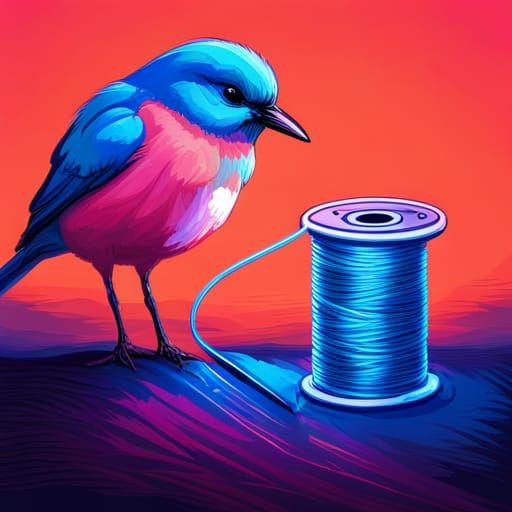At 12 hours old, it had more than 10 million users — all it took was a few clicks from your Instagram account.
It wasn’t just that it was easy. Since Elon Musk purchased Twitter last October, users have been looking for an alternative, whether by joining or returning to old standbys like Tumblr or Reddit (which has issues of its own), shifting to TikTok, or adopting a new microblogging platform like Mastodon, Tribel or Hive.
Twitter was broken. It held on for months, likely because starting over from scratch is hard, which kept a lot of users on the platform, if grudgingly.
Then, on June 30, Twitter blocked unregistered users from viewing content. The next day, it limited the number of Tweets registered users could see — especially those who are not members of the notorious, paid Twitter Blue service that destroyed the platform’s verification system and effectively gave Musk fans priority voices in comment threads.
It was temporary, Musk said, an emergency move to curb content scraping. That satisfied the blue checks, but left a lot of users fed up.
Meta’s impeccable timing
Longtime social media rival Meta made its move and officially launched Threads at 7:30 p.m. on June 5. The platform is simple — so simple that it wouldn’t be a surprise if it was pushed out before it was fully ready because the timing was too good to pass up.
The launch, at least, was a success. Within hours, it felt like something. It didn’t feel like Twitter. Not the Twitter of 2023, at least. It’s more like early Twitter, when it was fresh and people were figuring out its potential.
“Threads feels like Twitter circa 2011-2012, but skipping straight to the algorithmic feed,” software engineer Colin Dean wrote in a conversation on Technical.ly’s public Slack.
On Threads, you add some or all of your Instagram connections and a feed is created, composed of people you follow and some algorithmically selected accounts related to your interest. On Twitter, meanwhile, it’s become increasingly hard to curate away views Twitter really wants you to see. Threads is the Instagram algorithm that knows you so well, it will show you ads of the exact product you need or want to a sometimes creepy degree.
Threads put some accounts that are right up my alley on my feed. Your mileage may vary: Most people I’ve talked to anecdotally have said their feed contains content they’re not interested in. And we should all brace for political season, as well as an increase in big-name advertising.
‘Good vibes’ only?
Threads’ simplicity and apparent lack of bad-faith trolls (not to jinx it) has given it an early reputation as a “good vibes” platform. My own feed is brimming with food and art posts and people being positive. But you can’t search topics or use hashtags, a standard on Meta’s Instagram and Facebook, and I can’t agree that it’s somehow cleaner or less toxic that way — it just seems undercooked. When Chicago was under threat of a massive tornado the other night, it was back to Twitter to follow discussion about the storm in real time.
And while the first week on Threads has been good for meeting new people and finding new accounts, it’s really hard to find people you follow on Twitter if you don’t follow them on Instagram, especially if their Insta name differs from their Twitter handle. They may not be on Threads at all, of course. Either way, Threads can feel isolating while you build a new community there — though admittedly far less isolating than other new microblogging platforms.
Keyword search, at least, will likely come to Threads if it intends to be truly functional. In the meantime, the most promising, and in some ways controversial, thing about it that it will be a part of the fediverse.
What is the fediverse?
The fediverse, a portmanteau of “federated” and “universe,” is essentially a social network where different networks can connect and communicate. Mastodon operates in the fediverse: You join a community based on your interests or culture, and you have access to content from other communities.
It’s not too different from the concept of the metaverse, which is really meant to be different networks connecting, not a Meta-run virtual reality silo.
“I’m putting my energy into the fediverse,” Dean said. “I’m happy that Threads might eventually be on the fediverse. I reckon it’s going to get disfederated quickly, with a few Mastodon instances already declaring their intent to block Threads because its moderation policy is hot garbage.”
How those pushes to keep Threads out of the fediverse will impact the platform remains to be seen. How the exodus to Threads will impact Twitter does, too. We’ve been sure Twitter was on the brink of total collapse before in the last eight months, after all.
Before you go...
Please consider supporting Technical.ly to keep our independent journalism strong. Unlike most business-focused media outlets, we don’t have a paywall. Instead, we count on your personal and organizational support.
3 ways to support our work:- Contribute to the Journalism Fund. Charitable giving ensures our information remains free and accessible for residents to discover workforce programs and entrepreneurship pathways. This includes philanthropic grants and individual tax-deductible donations from readers like you.
- Use our Preferred Partners. Our directory of vetted providers offers high-quality recommendations for services our readers need, and each referral supports our journalism.
- Use our services. If you need entrepreneurs and tech leaders to buy your services, are seeking technologists to hire or want more professionals to know about your ecosystem, Technical.ly has the biggest and most engaged audience in the mid-Atlantic. We help companies tell their stories and answer big questions to meet and serve our community.
Join our growing Slack community
Join 5,000 tech professionals and entrepreneurs in our community Slack today!

The person charged in the UnitedHealthcare CEO shooting had a ton of tech connections

Delaware students take a field trip to China using their tablets and ChatGPT

From rejection to innovation: How I built a tool to beat AI hiring algorithms at their own game




